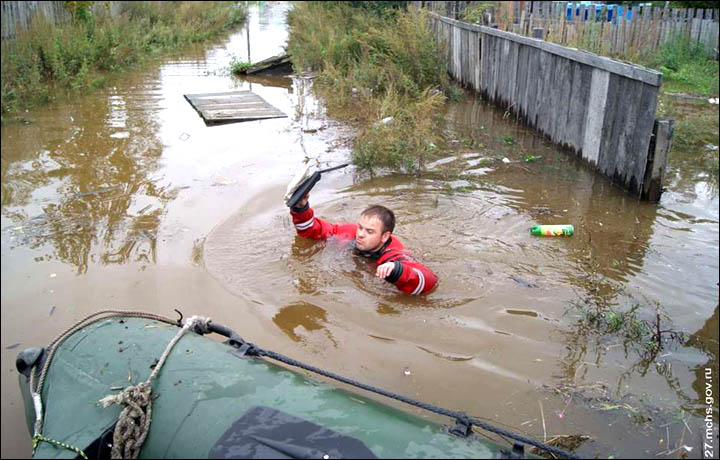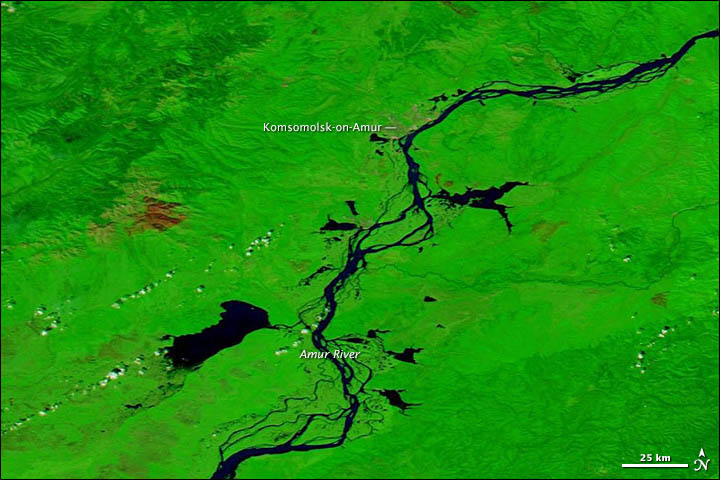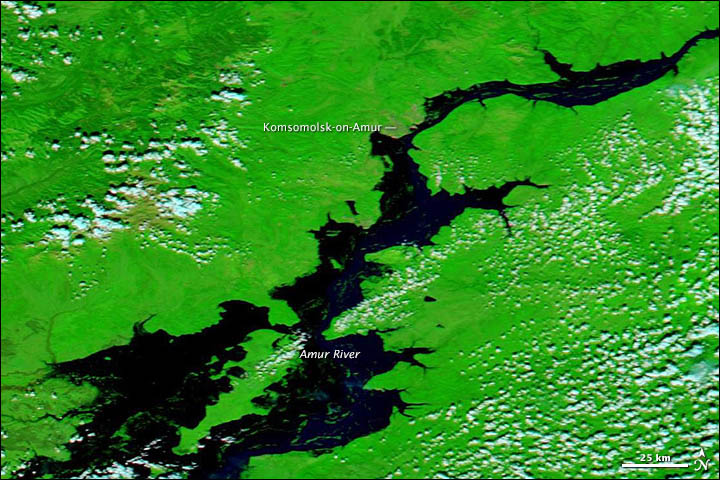
Recent days have seen students from the Emergencies Ministry literally holding back the tide, a human wall keeping in place containment booms to save the city, as our picture shows. Some have needed treatment for exposure to cold.
High winds of 15 metres per second produced high waves and made the task of rescuers even more difficult as they seek to prevent the bursting of a dam protecting the city of 264,000.
On Sunday Mi-8 helicopters were flying concrete slabs onto the dam to strengthen the barricades.
'In weather conditions of the kind, the floating transporters cannot be used, so the concrete slabs are being transported to the place of the erosion by helicopters', said a spokesman. 'The slabs are put to the base, and further on they will be covered by sacks with sand.'
The dramatic flooding is highlight on space pictures comparing the Amur this year to last. They were taken by NASA's Aqua satellite, said NASA's Earth Observatory on Friday. The flooding has caused severe damage to the Russian Far East for more than a month with Khabarovsk region the worst-hit.





Is that the infamous TRIANGLE UFO in the center of this NASA'S Aqua satellite picture taken August 2012 of the flooding AMUR River. It casts a shadow on the ground.